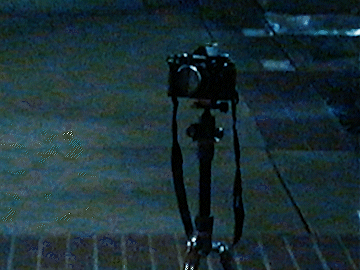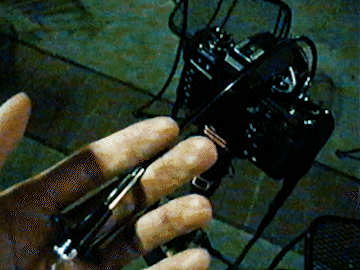Night Photography
Because it’s too hot outside…
Summer brings the unbearable heat which can tank one’s motivation to go out and take photos. Ways to beat the heat are: living in a cooler climate (not possible for everyone), shooting at off times where the sun is not at it’s peak, or just accepting the fact that you’ll need to suffer in the day for your hobby.
Today (err..I guess tonight) I decided to shoot in the night to avoid the scorch. Which brings a whole lot of new challenges. Admittedly, I’m not versed in night photography. Nor do I really get motivated to shoot at night. So I figured that this would be a way to challenge me by getting familiar with a time of night that I’m not comfortable with.
Tips!
My biggest tips for night photography are two simple things: get a tripod or get a fast lens. Many people will say that a full frame is essential too but I would say a tripod or a faster lens make a bigger difference. Because for most shots at night, you can usually shoot at iso 800 which most digital cameras can do with clean results. With a fast lens (f2 or faster), you are able to hand hold your camera at shutter speeds of 1/60 or even 1/30 if you are steady enough. And with a tripod, you are able to get crisp clean shots with any lens or camera. A tripod is the cheapest option and you can use anything as a tripod. Get creative!
Though, if you can afford it, a full frame camera will help immensely. Especially one made in the 2010’s as this is when most camera companies have dialed in their processors in cameras to have insane dynamic range! You can easily shoot at iso 3200-6400 with these ‘modern’ dlsr’s!!
iso 800 - f 2.0 - 1/60 sec
iso 800 - f 2.0 - 1/60 sec
This was pushed to almost +3 stops in lightroom. Showcasing the power of nikon’s d4 sensor!! (2012)
What about camera settings??
Figuring out your camera settings is actually pretty easy! Whether you are hand holding or using a tripod, the only thing you need to remember is this: light is consistent. Because most lights have similar outputs, you will generally use the same settings over and over again.



I use a system called X ratings, which is a method to light meter without any tools, to figure out my camera settings. At night, usually the X rating ranges from X7-X10 with X8 being the most common. What this means is that most lights will be shot at iso 800 - f 2.0 - 1/60 while bright lights like gas station lights will be shot at f 2.8 instead or dim lights will be shot at iso 3200.
For an example: lets say my lens can only go down to f 4, I can see that I need to be at iso 3200 and at a shutter speed of 1/60 sec. What if my camera can’t go to iso 3200? Perhaps only iso 800 and at f 4? You will need to shoot at 1/15 sec because that’s a 2 stop difference. I know this probably doesn’t make much sense without knowing X ratings and maybe I’ll make a guide on that but it’s okay to be confused. Use iso 800 - f 2.0 - 1/60 as a starting point.
Long Exposures
Slow shutter speeds can be a little tricky. Some things you need to make sure of is:
Tripod is sturdy and possibly weighed down
Mirror is locked up before firing
Use some sort of remote or timer
Block any wind
Out of these, a remote or a cable release will make things much easier. Because without it, you will need to use a 5 second timer to avoid any camera shake when the shutter is pressed. Dslr’s will need a remote but film cameras can use these cable releases which are cheap and easy to buy from eBay. Mirror lock up is also a good idea as the camera’s mirror can cause slight vibrations when moving. This is found in your camera’s settings and some film cameras are NOT able to do this unfortunately.
Wind can also be a pain. Best to avoid it but sometimes you find yourself in a scenario where you’ll have to deal with it. I usually use my body to block any incoming wind but you can use nearby buildings or weigh your tripod down with a bag or even simply hold it down with your hands.
Long exposures are great! You can get unique photos by planning for the light and utilizing a slow shutter speed
Film at Night
Shooting film at night can be a little tricky. With no way of knowing what your final image is in the moment, it is very easy to mess up camera settings and get black images or over exposed photos.
Perhaps the easiest way to test exposures with film is to bring along a digital camera. Simply take a photo with the digital and copy the settings to the film camera.
Another way is to use a light meter. You can get one on a smartphone but I have found that they can be a little unreliable which in my opinion is too big of a risk. Though, a nice hand held light meter can go upwards of $200 so a smartphone app is better than nothing.
One last thing you need to worry about is reciprocity failure which is where film has a decrease in light sensitivity the longer the shutter is open. Ektachrome doesn’t need adjustments until after 10 sec times so technically I should have compensated for that but it was almost negligible. After a little research, I found that this really shows up after 30 sec exposures for most film stocks. If you are worried about it, you can just double your exposure time to add a stop of light.
Pentax Spotmatic - Takumaru 55mm f 2 - Ektachrome 100
That’s all for this blog post! Thanks for reading and I hope this gives you a little inspiration to go out and take photos at night. Always be careful when photographing by yourself at night. And what kind of tricks or tips do you have when shooting night photography?













